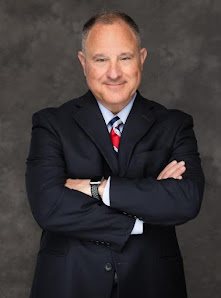Matthew T. Mangino
GateHouse Media
March 3, 2017
Last week, the U.S. Supreme Court ruled that Texas
death row inmate Duane Buck may be entitled to a new sentencing hearing because
an expert witness testified at his trial that Buck was more likely to be
dangerous in the future because he is black.
Last week, the U.S. Supreme Court ruled that Texas
death row inmate Duane Buck may be entitled to a new sentencing hearing because
an expert witness testified at his trial that Buck was more likely to be
dangerous in the future because he is black.
The victory for Buck, and all those who believe in
the edict that justice is blind, may not — if history is a guide — provide the
ultimate relief that Buck is looking for — a new sentence of life in prison.
During the sentencing phase of Buck's trial in 1997,
his lawyer presented a report from psychologist, Dr. Walter Quijano, who said
race was one of the factors associated with future dangerousness.
According to the New York Times, Dr. Quijano
testified at trial, "It's a sad commentary that minorities, Hispanics and
black people, are overrepresented in the criminal justice system,"
In response a prosecutor asked, "The race
factor, black, increases the future dangerousness for various complicated
reasons — is that correct?" Dr. Quijano replied, "Yes."
This is not the only time that Dr. Quijano made the
connection between race and future dangerousness. In Texas, to obtain a death
sentence, the State has to prove beyond a reasonable doubt that there is a
probability the defendant would commit violent criminal acts in the future.
In 2000, while Buck's case was on appeal in state
court, the U.S. Supreme Court reviewed the case of Victor Saldano. The same
psychologist testified during Saldano's sentencing that Saldano's race increased
the likelihood of future dangerousness.
John Cornyn, Texas' attorney general at the time and
now a United States senator, began a review of death penalty cases involving
Dr. Quijano's testimony. He found six cases, including Buck's that had tainted
testimony.
''The people of Texas want and deserve a system that
affords the same fairness to everyone,'' Cornyn said at the time, according to
the New York Times. The state later consented to new sentencing proceedings in
the five other cases; John Alba, Carl Henry Blue, Eugene Alvin Broxton, Gustavo
Julian Garcia and Michael Dean Gonzales.
Buck was not granted a new sentencing. A new Texas
Attorney General was elected and the State contested that Buck was entitled to
a new sentencing hearing. The lower courts refused to reverse his death
sentence.
Last week's decision may finally provide Buck with a
new sentencing hearing. Chief Justice John Roberts wrote that Dr. Quijano's
testimony was laced with "a particularly noxious strain of racial
prejudice."
The expert testimony "said, in effect, that the
color of Buck's skin made him more deserving of execution." Roberts went
on to write that, "Our law punishes people for what they do, not who they
are ... Dispensing punishment on the basis of an immutable characteristic
flatly contravenes this guiding principle."
In a dissent, Justice Clarence Thomas wrote that the
Buck decision "has few ramifications, if any beyond the highly unusual
facts presented here (in Buck's case)."
Unfortunately, that is not entirely correct. The six
other men identified as being subject to the racially charged — and clearly
flawed — testimony of Dr. Quijano have little to show for having been
originally sentenced to death, in part, because of their race.
Three of the six have been executed — John Alba in
2010; Carl Henry Blue in 2013 and Gustavo Julian Garcia in 2016. The other
three — Victor Saldano, Eugene Alvin Broxton, Michael Dean Gonzalez — are back
on death row awaiting execution.
The same fate may await Duane Buck. The Supreme
Court did not change Buck's sentence to life in prison. The Court merely
provided a mechanism for Buck to have a new sentencing hearing without the
flawed testimony of Dr. Quijano.
In much the same way that the six prior inmates were
resentenced to death, Buck may ultimately return to death row and, at some
point, the death chamber in Huntsville, Texas.
— Matthew T. Mangino is of counsel with Luxenberg,
Garbett, Kelly & George P.C. His book "The Executioner's Toll,
2010" was released by McFarland Publishing. You can reach him atwww.mattmangino.com and follow him
on Twitter @MatthewTMangino.
To visit the column CLICK HERE








No comments:
Post a Comment